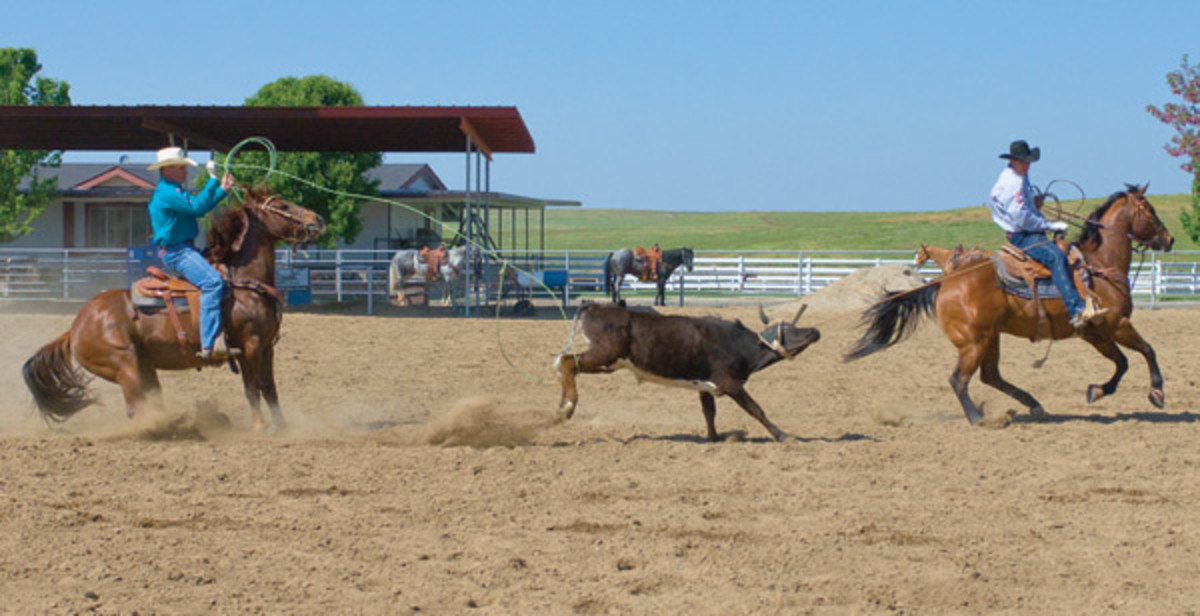
Heeling a steer by two feet is not the easiest chore sometimes. If you lose one after you’ve roped him, it’s really a bummer. The hard part’s getting a steer in it, so then if you let him out it’s not good. One of the most common phrases in roping is, “I slipped a leg.” Probably a third of the time the truth is he was never in it with both feet in the first place. That saying’s a little overused. On the serious side of it, you do lose a leg and sometimes even lose both of them after you roped them both and it costs you. It’s hard to take when you feel like you did everything right, got him in your loop and the money’s up. It’s a bummer, not only for you, but for your partner too. There are things that cause that; a reason it happens. At the George Strait roping the last two years I’ve lost a leg for Chad Masters on the last day. After being four on the first steer both times, he turned the second steer to be four again and I roped him, then lost a leg—both times.
If a header slows up, or gets to the fence as you’re pulling or lifting your slack and going to the horn, that speed change can cause you to lose a leg.

Another cause for losing a leg is when a steer drifts under your horse’s neck as you’re pulling your slack and going to the horn. That direction change is another change of speed. When that steer slows down just an instant, it happens. If you see that happen, you have to hold your slack a little longer to keep him in it.
If you’ve roped goats much, they’ll sometimes jerk a leg straight up in the air. Some steers do the same thing. They get smart, and learn to hike a leg or two up when the rope hits them. It’s a trick they learn, and it’s tough to keep your rope on those steers.
Things we do ourselves that cause us to slip a leg include going to the horn too fast. If you pull your slack up and go straight to the horn, it can send a wave down your rope to the steer that’ll drop your rope down the legs. Sometimes you lose both legs when that happens.
[PAGEBREAK]

The way you keep your cattle roped is to really stay in rhythm with your slack. You were in a rhythm when you roped that steer, and you don’t want to break that rhythm when you go to the horn or you can lose legs. When I break rhythm in my dally, it can cause me to lose a leg. I throw, lift and go to the horn all in the same rhythm. The speed of that jump determines the speed of the delivery of your loop. Your catch is based on a rhythm, your slack and going back down to the horn should be on that same rhythm.
Position is really a key factor here. If you rope with too much separation occurring, then you’re having to hurry back to the horn because if you don’t you might not make it in time to get a good dally. Roping out of position, with a steer leaving you too hard, and roping off of too much separation between the horse and the steer will cause you to have to hurry back to the horn without being able to lift your slack. Hurrying back to the horn, and not lifting your slack will, in turn, cause you to lose legs.











